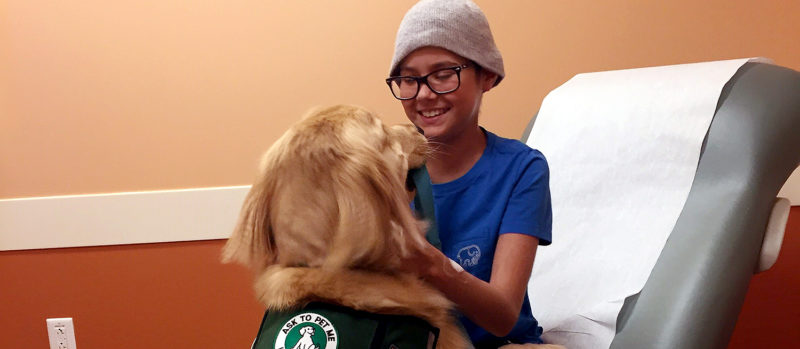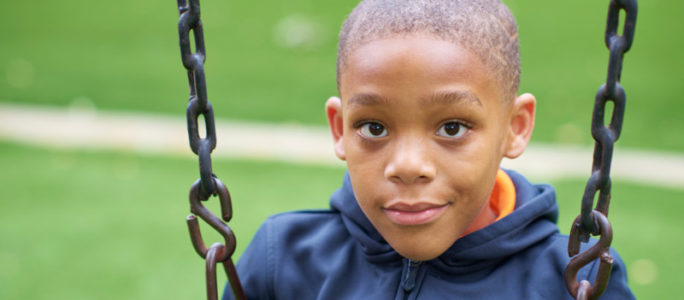When your child receives a cancer or blood disease diagnosis, it can be a stressful period of time. A lot of information has been given to you and sorting through it all can be overwhelming.
The good news is that over 80% of children who receive this diagnosis will survive it. Because of this, doctors and researchers have been looking for ways to improve the quality of life for pediatric and young adult cancer patients, including preserving their fertility so that they have the option to have a biological family down the road.
Some treatments are more damaging to fertility than others, which is why it’s important for your fertility team to explain the risks and benefits to you so that you can make an informed decision about your child’s future.
About 15-20% of children across the country with cancer and blood diseases will opt to do some type of fertility preservation. Here are three must-know facts about fertility in kids with cancer and blood diseases:
- Alkylating agents are the most damaging to fertility.
Alkylating agents, a specific class of chemotherapy drugs, and radiation to the pelvic area, are the most threatening to fertility. They are damaging because they kill cells in the body that are dividing rapidly, but they don’t differentiate between healthy and cancerous cells. - Pubertal status is key.
One of the most important factors in determining your child’s risk for fertility complications and the fertility preservation options available to them is whether or not they have been through puberty yet.
For females:
[list][item icon=”fa-female” ][/item][/list] If your daughter has gone through puberty, she may have the option to preserve her eggs or embryos before treatment (see #3 below). Unfortunately, in most cases cancer therapy must start before this can take place.
[list][item icon=”fa-female” ][/item][/list] If your daughter has not gone through puberty, we give parents the option to save their daughter’s ovarian tissue (called ovarian tissue cryopreservation), but this technology is being refined through research and is not a standard of care yet.
For males:
[list][item icon=”fa-male” ][/item][/list] If your son has gone through puberty, sperm banking is a standard of care. Meaning, the sperm are frozen before treatment (see #3 below) to be used when he’s ready to start having children.
[list][item icon=”fa-male” ][/item][/list] If your son has not been through puberty yet, the option available is still research-based. Boys who are high risk for fertility complications have the choice to freeze their testicular tissue, but it’s still in an early research phase. We give this option to families so that if the technology does develop, they will have options down the road. - Timing is everything.
If boys are going to become infertile, it’s going to happen during treatment, so it’s best to preserve ahead of time.
Girls are the opposite. They are at risk of early menopause, which occurs when they run out of eggs. And treatment can speed up that process. The best fertility option is to freeze them before treatment. However, for some teens and young adults, there may be an option to freeze them afterwards, as some eggs may still be there following treatment.
This is where your child’s hematology/oncology and fertility preservation teams can plan together and inform you of all of your options. Timing can be crucial to the process, but some children may not have the option to delay treatment for the 2 days to six weeks that some fertility preservation options take. To give you an idea, here are the time frames for some procedures:
[list][item icon=”fa-female” ][/item][/list] Pre-pubertal females: ovarian tissue freezing can be done in 2-3 days
[list][item icon=”fa-female” ][/item][/list] Post-pubertal females: embryo and egg freezing can take 2-6 weeks
[list][item icon=”fa-male” ][/item][/list] Pre-pubertal males: testicular freezing can take 2-3 days
[list][item icon=”fa-male” ][/item][/list] Post-pubertal males: sperm banking can take 1-7 days
As a pediatric oncologist with a special interest in fertility preservation, it’s our team’s goal to make sure that we give families all of the information they need to make a decision that they will be comfortable with years down the road. Whether or not you choose fertility preservation for your child, we have found that families appreciate having this information up front to make an informed decision about their child’s future.
Editor’s note: Drs. Burns and Hoefgen recently hosted a live Q&A session about fertility preservation in children, adolescents and young adults with cancer and blood diseases. You can view the recording here.





